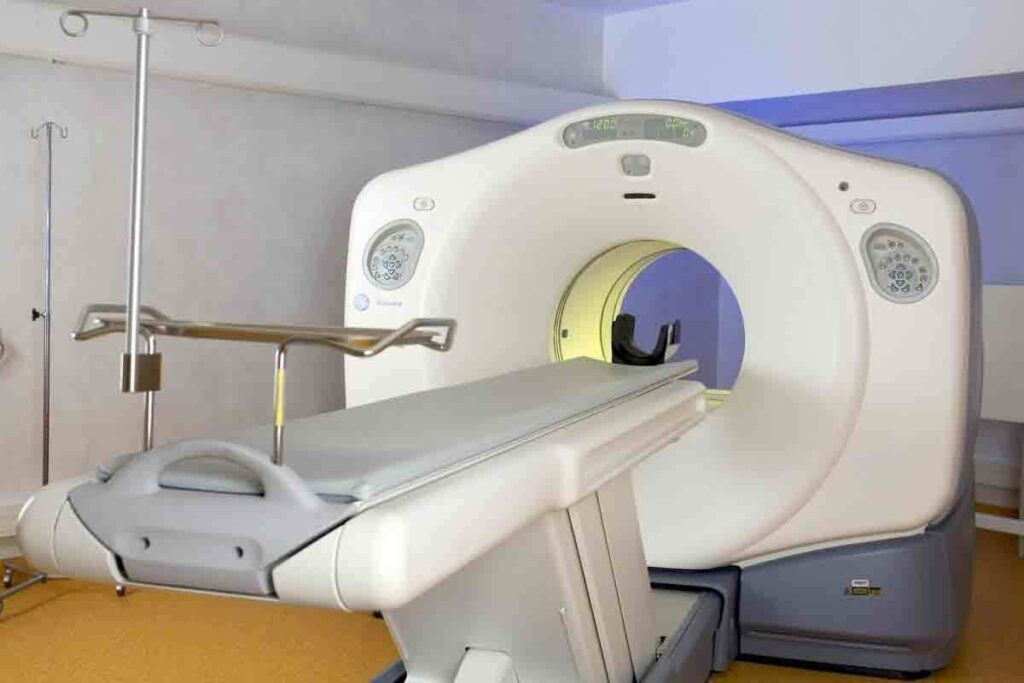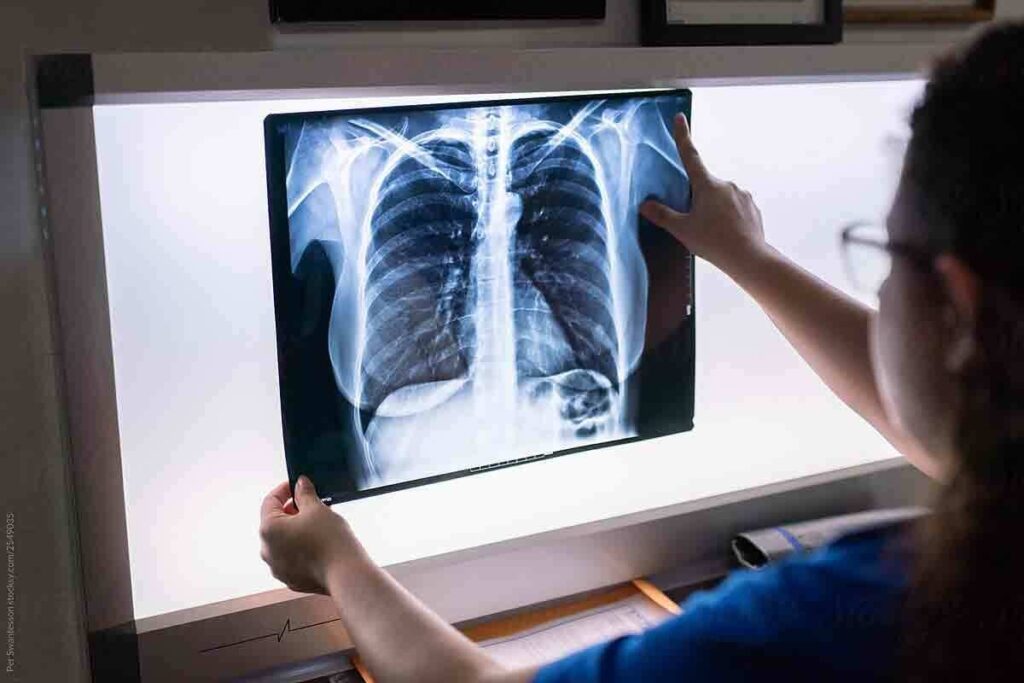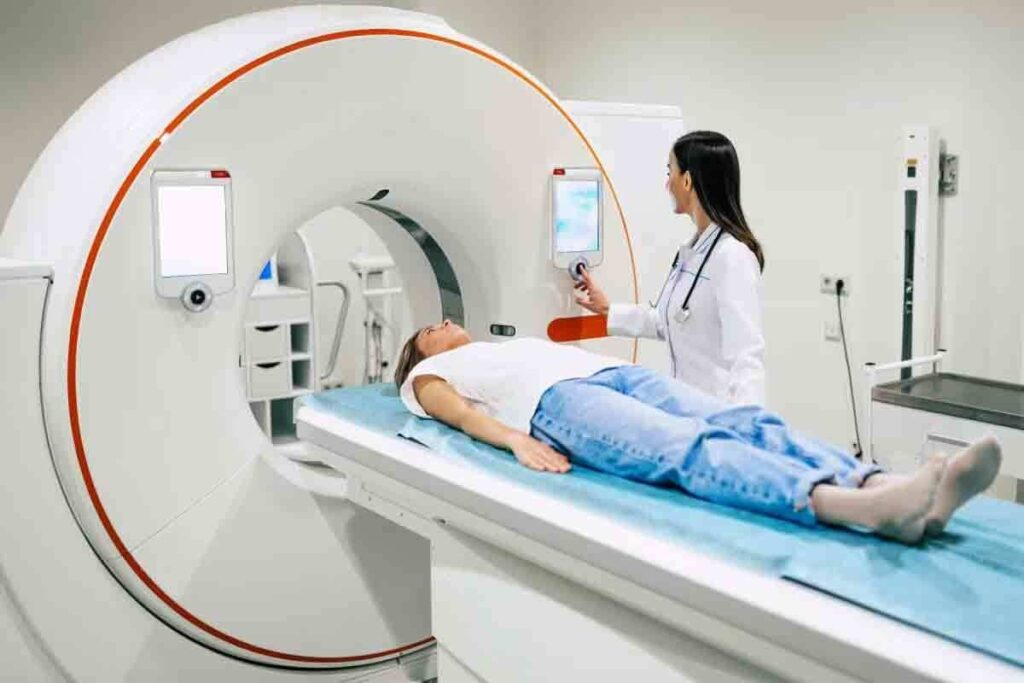
For those fighting cancer, knowing about PET scans is key. At Liv Hospital, we focus on when PET scans are needed, not just how many. The number of scans depends on the cancer type, its stage, how well it responds to treatment, and the patient’s health.Find out how many PET scans can you have in a lifetime. This ultimate guide provides powerful, amazing answers on scan frequency and safety.
Medicare might limit PET scans to three after treatment. But, this rule can change based on your needs and insurance. Our team at Liv Hospital aims to offer safe, effective imaging. We make sure each PET scan is based on the latest standards and care for you.
PET scans have changed how we find and understand cancer. They use a tiny bit of radioactive tracer to spot bad cells. This tech is key in fighting cancer, helping doctors make the right treatment plans.
We’ll dive into how PET scans work, what makes them special, and their big role in cancer care.
PET scans inject a radioactive tracer into your body. This tracer is grabbed by cells. The PET scanner catches the signals from these cells, showing detailed pictures of where they are.
This tech is great for finding cancer because it shows where cells are working too hard. Cancer cells usually do this more than healthy ones.
PET scans show how cells are working, not just where they are. This is different from CT scans or MRI, which just show body structure. PET scans help find cancer early, see how far it’s spread, and check if treatments are working.
PET scans are really good at telling apart cancerous and non-cancerous growths. This means fewer painful tests are needed.
PET scans offer many advantages in cancer care. They help:
With this info, doctors can make treatments that really fit each patient. This leads to better results and a better life for those fighting cancer.
The question of how many PET scans a person can have in their lifetime is complex. It involves balancing medical needs against the risks of radiation. There’s no clear limit, but several factors influence the safe number of scans.
The key factor is medical necessity. Doctors decide on PET scans based on the patient’s health, cancer type, and treatment stage. For example, those with advanced cancer might need more scans to track the disease and treatment response, as research shows.
Unlike some procedures with strict limits, PET scans don’t have a fixed cap. Instead, they’re based on the patient’s medical needs and the doctor’s expertise.
Several factors affect how often PET scans are safe:
Doctors weigh these factors to decide on scan frequency. They aim to get the most benefit while keeping risks low.
For those having many PET scans, long-term effects are important. While PET scans are vital in cancer care, repeated radiation exposure can add up. Yet, efforts to lower radiation doses in PET scans are making them safer.
New technologies and techniques are being developed. These aim to cut radiation exposure while keeping image quality high.
Understanding insurance for PET scans can be tricky, mainly for cancer patients. Knowing what your coverage includes is key to managing costs and getting the tests you need.
Medicare has rules for PET scans in cancer treatment. It covers scans for diagnosis and monitoring but limits follow-up scans to three per patient and tumor type after treatment. This policy aims to balance monitoring needs with scan risks.
For more than three scans, doctors must provide extra details. They need to explain why more scans are needed. This includes medical records, treatment plans, and why more scans are necessary.
Key documentation elements include:
Private insurance plans differ from Medicare’s rules. Some may have stricter rules or different limits on scans. It’s important for patients to check their policies and talk to their doctors.
Factors influencing private insurance coverage include:
Knowing these factors and talking to your insurance can help get the PET scan coverage you need for cancer treatment.
PET scans are pricey due to many factors. These scans are key in finding and managing cancer. The cost isn’t just about the tech but also other elements.
Setting up a PET scan facility costs a lot. The initial investment is huge, with the PET scanner alone costing millions. Safety and regulatory rules add to the cost.
Keeping the equipment running also costs a lot. This includes updates and regular checks.
Another big part of the cost is making and moving radiopharmaceuticals. These substances help show how the body works in PET scans. Making them is complex and needs special gear and people.
Because these substances don’t last long, they must be made and moved quickly. This adds to the cost and complexity.
Moving these substances is strict and must be done safely. It involves many steps and costs. These costs are part of what makes PET scans expensive.
The need for PET scans changes as cancer progresses. Early-stage cancer needs less frequent scans. But, advanced cancer requires more scans to monitor and manage the disease.
PET scans are key for diagnosing and staging early-stage cancer. The scan frequency depends on the cancer type, treatment response, and patient risk. Early-stage cancer patients might have scans every 6 to 12 months during follow-up care.
Patients with advanced cancer need PET scans more often. These scans help monitor treatment response, detect disease progression, and guide treatment changes. For advanced cancer, scans might be done every few months or as needed.
Knowing when to use PET scans is key to managing cancer. Tailoring scan frequency to cancer stage helps improve patient care and outcomes.

PET scans are key in finding and monitoring lung cancer. They give us important details that help us decide how to treat it. These scans show how active lung tumors are, helping us tell if they are cancerous or not.
PET scans are great at finding lung cancers because they show where tumors are active. Tumors use more sugar than normal cells, making them easy to spot. This helps us catch lung cancer early.
These scans are much better at finding lung cancer than other tests. They help doctors start treatment right away.
After finding lung cancer, PET scans help figure out how far it has spread. Knowing this helps plan the best treatment. They show if cancer has spread to other parts of the body.
PET scans give a full picture of the disease. This helps doctors plan the best treatment for each patient. They can choose between surgery, chemo, or radiation, based on the scan results.
Understanding PET scans and lung cancer is important. The scans measure how active lung tissue is. High activity means cancer might be present.
But, some non-cancerous conditions can also show up on scans. So, we look at all the information together. This helps us make the right diagnosis.
Knowing when to use PET scans is key to managing cancer. PET scans are vital in different stages of cancer care.
PET scans help diagnose cancer and see how far it has spread. They show how active tumors are, which helps in planning treatment.
During treatment, PET scans check if the cancer is responding well. This lets doctors make changes to the treatment plan for better results.
After treatment, PET scans watch for cancer coming back and check symptoms. Finding cancer early can greatly improve treatment success.
More PET scans might be needed if symptoms change or if treatment response needs checking. Your doctor will decide based on your health and history.
Understanding PET scans’ role in cancer care helps patients see their value. It shows how these tools help manage their condition.
PET scans are very useful for finding and tracking cancer. But, they also come with risks like radiation exposure and allergic reactions. Knowing these risks helps us make smart choices about using PET scans in cancer treatment.
PET scans use tiny amounts of radioactive tracers to see how the body works. A single scan is usually safe, but many scans over time might raise cancer risk. This is because of the buildup of radiation in the body.
For people who have many scans, the risk of getting cancer from radiation is a big worry. Research is ongoing to understand this risk better.
| Radiation Exposure Level | Potential Health Risk |
| Low dose (<10 mSv) | Minimal risk, potentially no increased cancer risk |
| Moderate dose (10-50 mSv) | Small increased risk of cancer, potentially 1 in 1,000 |
| High dose (>50 mSv) | Notable increased risk of cancer, potentially 1 in 100 |
Allergic reactions to PET scan tracers are rare but can be serious. Mild symptoms like hives and itching are possible, but severe reactions can happen too. If you have allergies, tell your doctor before a PET scan.
“It’s essential for patients to disclose any history of allergies or previous reactions to contrast agents or radiopharmaceuticals to minimize the risk of an adverse reaction during a PET scan.”
-Experts note
Frequent PET scans can affect your mind as well as your body. The worry of waiting for scan results, called “scanxiety,” can really lower your quality of life. Also, needing many scans can make you feel dependent on them, causing more stress.
Knowing the risks helps us decide if the benefits of PET scans are worth it. This way, we can make better choices for cancer care.

It’s important to look at how well routine PET scans work for patients. These scans are often used to check on cancer, but they have both good and bad sides.
Research has looked into if PET scans help patients live longer. Some studies say yes, but others are not so sure.
A study in the Journal of Clinical Oncology found that PET scans didn’t always help patients live longer. But, they did help find cancer again in some cases.
| Study | Findings | Implications |
| Journal of Clinical Oncology | Routine PET scans did not significantly improve overall survival | Limited benefit for routine scans in certain cancer types |
| Cancer Research | PET scans are effective in detecting recurrence | Potential benefits for targeted patient groups |
One big worry with PET scans is getting false positives. This means the scan says there’s cancer when there isn’t. It can lead to more tests and worry for patients.
Studies show that false positives can cause more tests and even biopsies. These can be painful and expensive. The worry it causes patients is also important.
In some cases, PET scans might not help patients much. This is true for slow-growing cancers or when treatment options are few.
Doctors now suggest using PET scans based on each patient’s needs. This way, they can help more while avoiding too many tests.
Recent tech has made PET scans safer. We’re moving towards better, safer ways to diagnose diseases. Let’s look at the key tech that’s making PET scans safer for patients.
New tech has led to lower radiation doses in PET scans. New scanner technologies and improved radiopharmaceuticals help achieve this. Now, some PET scanners can scan at much lower doses, making them safer for patients.
New tech has also improved image quality at lower doses. Advances in detector technology and image reconstruction algorithms have made scans clearer. This means patients get better images while being exposed to less radiation.
Combining PET with CT and MRI has improved diagnostics. PET/CT scans mix PET’s function with CT’s anatomy. PET/MRI adds MRI’s soft tissue contrast to PET’s function. These combos help doctors make more accurate diagnoses and might reduce the need for more scans.
The benefits of these advances are clear:
As a patient, knowing the right questions about PET scan frequency is key. It’s important to talk openly with your doctor about the scan’s benefits and risks.
Understanding your risk-benefit profile for PET scans is vital. This means looking at your medical history, cancer type and stage, and any past radiation exposure.
These questions help you understand why your doctor suggests a certain PET scan frequency.
There might be other ways to monitor your health. This could include MRI or CT scans, or different diagnostic methods.
Questions to ask about alternatives include:
If your doctor suggests a PET scan, it’s important to understand why. Asking questions helps ensure you get the right care.
Key questions to ask:
Talking about these topics helps you make informed decisions about your care. It ensures you get the best treatment for you.
PET scans are key in finding and treating cancer. How often someone gets a PET scan depends on their health and treatment plan. This makes sure each scan is needed.
The number of PET scans a person can have changes based on their cancer and treatment. Things like how far the cancer has spread and if it comes back again matter. Also, what insurance covers and doesn’t can affect how often scans are done.
In short, PET scans are very important in fighting cancer. They help doctors understand the cancer and plan the best treatment. Knowing when and why PET scans are used helps both patients and doctors make better choices for cancer care.
The number of PET scans you can have varies. It depends on your health and medical needs. Insurance and guidelines also play a role in how often you can get one.
For cancer patients, PET scan frequency varies. It depends on the cancer type, stage, and treatment response. Doctors usually recommend them when necessary, and scans can be spaced out from months to years.
PET scans cost a lot because of the equipment and radiopharmaceuticals. The technology’s complexity and the need for skilled staff also add to the expense.
The percentage of positive PET scans for cancer varies. It depends on the patient, cancer type, and scan purpose. PET scans are very sensitive, but the exact percentage varies.
Yes, PET scans can detect and monitor lung cancer. They help identify and stage the disease. They’re also good for checking if cancer has spread.
PET scans are generally safe but carry some risks. These include radiation exposure and allergic reactions. There’s also a psychological impact from frequent scans. But the benefits of the scans are usually worth the risks.
Insurance coverage for PET scans varies. Medicare has a three-scan policy for cancer patients under certain conditions. Private insurance policies can differ, sometimes requiring more documentation for multiple scans.
Talk to your doctor about your risks and benefits. Discuss alternative monitoring options and the need for PET scans. Understanding the reasons for the scan frequency helps you make informed decisions.
Yes, new PET scan technologies reduce risks. They include lower radiation doses and better image quality. Advances like PET/CT and PET/MRI scans aim to keep the benefits while lowering risks.
PET scans are often recommended for diagnosis, treatment response, and recurrence monitoring. The decision to use them depends on individual patient needs and the clinical situation.
Subscribe to our e-newsletter to stay informed about the latest innovations in the world of health and exclusive offers!
WhatsApp us